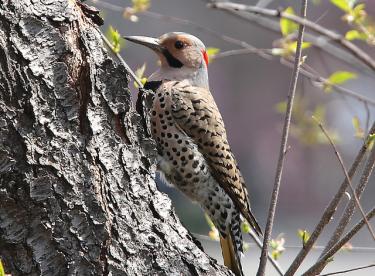Guide for Finding Birds on your Land
1. Determine your habitat types. For birders, knowing the make-up of the habitat they are entering helps both in finding certain birds, and also in identifying any particular bird they may see. So if you know your property, and the types of habitats that exist within it, you will more easily be able to identify and find various birds.
The main types of woodland habitat are:
- forest cover, i.e. the area directly under the tree canopy;
- edge habitat, where the forest ends and open grassland or cropland begins;
- open grassland, cropland or prairie;
- wetlands or ponds.
Different bird species live in each of these habitat, although several fit between them too. But you'll generally be able to identify birds better based on the habitat where you see them.
2. Look everywhere, not just at eye level. Train your eyes to see tiny movements, even just the appearance of a color or shadow where there wasn’t one before. You’ll be surprised how quickly you can train your eyes to notice movement. Birds can be literally anywhere—even underground, in some cases. So once you have identified your habitats, look for birds at all different levels, from on the ground, to the lower under-story shrubs, to the trees, and also in the air and on the water.
3. Listen. One of the best ways to find birds is to stand or walk quietly, and listen. As it is for humans, bird communication is part visual, part audio. So listen for their conversations, stay quiet and wait for them to appear.
How can I get more tips?
It’s simple! Enter your email below.

